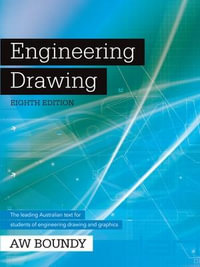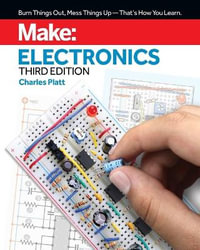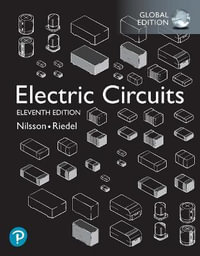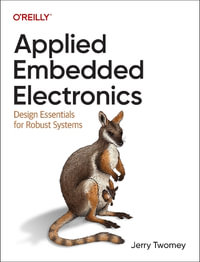Preface xi
Abbreviations and Acronyms xiii
1 Introduction 1
1.1 The Definition of a Conformal Antenna 1
1.2 Why Conformal Antennas? 2
1.3 History 4
1.4 Metal Radomes 9
1.5 Sonar Arrays 9
References 11
2 Circular Array Theory 15
2.1 Introduction 15
2.2 Fundamentals 16
2.2.1 Linear Arrays 16
2.2.2 Circular Arrays 19
2.3 Phase Mode Theory 23
2.3.1 Introduction 23
2.3.2 Discrete Elements 27
2.3.3 Directional Elements 29
2.4 The Ripple Problem in Omnidirectional Patterns 34
2.4.1 Isotropic Radiators 37
2.4.2 Higher-Order Phase Modes 40
2.4.3 Directional Radiators 40
2.5 Elevation Pattern 41
2.6 Focused Beam Pattern 41
References 46
3 The Shapes of Conformal Antennas 49
3.1 Introduction 49
3.2 360° Coverage 52
3.2.1 360° Coverage Using Planar Surfaces 52
3.2.2 360° Coverage Using a Curved Surface 54
3.3 Hemispherical Coverage 57
3.3.1 Introduction 57
3.3.2 Hemispherical Coverage Using Planar Surfaces 58
3.3.3 Half Sphere 60
3.3.4 Cone 60
3.3.5 Ellipsoid 62
3.3.6 Paraboloid 63
3.3.7 Comparing Shapes 64
3.4 Multifaceted Surfaces 67
3.5 References 70
4 Methods of Analysis 73
4.1 Introduction 73
4.2 The Problem 75
4.3 Electrically Small Surfaces 76
4.3.1 Introduction 76
4.3.2 Modal Solutions 76
4.3.2.1 Introduction 76
4.3.2.2 The Circular Cylinder 77
4.3.2.3 A Unit Cell Approach 79
4.3.3 Integral Equations and the Method of Moments 80
4.3.4 Finite Difference Time Domain Methods (FDTD) 81
4.3.4.1 Introduction 81
4.3.4.2 Conformal or Contour-Patch (CP) FDTD 82
4.3.4.3 FDTD in Global Curvilinear Coordinates 83
4.3.4.4 FDTD in Cylindrical Coordinates 84
4.3.5 Finite Element Method (FEM) 87
4.3.5.1 Introduction 87
4.3.5.2 Hybrid FE-BI Method 88
4.4 Electrically Large Surfaces 89
4.4.1 Introduction 89
4.4.2 High-Frequency Methods for PEC Surfaces 90
4.4.3 High-Frequency Methods for Dielectric Coated Surfaces 93
4.5 Two Examples 95
4.5.1 Introduction 95
4.5.2 The Aperture Antenna 95
4.5.3 The Microstrip-Patch Antenna 98
4.6 A Comparison of Analysis Methods 100
Appendix 4A—Interpretation of the ray theory 100
4a.1 Watson Transformation 103
4a.2 Fock Substitution 103
4a.3 SDP Integration 104
4a.4 Surface Waves 105
4a.5 Generalization 107
References 108
5 Geodesics on Curved Surfaces 123
5.1 Introduction 123
5.1.1 Definition of a Surface and Related Parameters 125
5.1.2 The Geodesic Equation 127
5.1.3 Solving the Geodesic Equation and the Existence of Geodesics 128
5.2 Singly Curved Surfaces 130
5.3 Doubly Curved Surfaces 135
5.3.1 Introduction 135
5.3.2 The Cone 135
5.3.3 Rotationally Symmetric Doubly Curved Surfaces 137
5.3.4 Properties of Geodesics on Doubly Curved Surfaces 139
5.3.5 Geodesic Splitting 141
5.4 Arbitrarily Shaped Surfaces 149
5.4.1 Hybrid surfaces 150
5.4.2 Analytically Described Surfaces 152
References 152
6 Antennas on Singly Curved Surfaces 155
6.1 Introduction 155
6.2 Aperture Antennas on Circular Cylinders 157
6.2.1 Introduction 157
6.2.2 Theory 157
6.2.3 Mutual Coupling 158
6.2.3.1 Isolated Mutual Coupling 158
6.2.3.2 Cross Polarization Coupling 168
6.2.3.3 Array mutual coupling 168
6.2.4 Radiation Characteristics 173
6.2.4.1 Isolated-Element Patterns 175
6.2.4.2 Embedded-Element Patterns 176
6.3 Aperture Antennas on General Convex Cylinders 192
6.3.1 Introduction 192
6.3.2 Mutual Coupling 193
6.3.2.1 The Elliptic Cylinder 193
6.3.2.2 The Parabolic Cylinder 194
6.3.2.3 The Hyperbolic Cylinder 194
6.3.3 Radiation Characteristics 194
6.3.3.1 The Elliptic Cylinder 196
6.3.3.2 End Effects 196
6.4 Aperture Antennas on Faceted Cylinders 200
6.4.1 Introduction 200
6.4.2 Mutual Coupling 207
6.4.3 Radiation Characteristics 209
6.5 Aperture Antennas on Dielectric Coated Circular Cylinders 209
6.5.1 Introduction 209
6.5.2 Mutual Coupling 213
6.5.2.1 Isolated Mutual Coupling 213
6.5.2.2 Array Mutual Coupling 215
6.5.3 Radiation Characteristics 221
6.5.3.1 Isolated-Element Patterns 221
6.5.3.2 Embedded-Element Patterns 223
6.6 Microstrip-Patch Antennas on Coated Circular Cylinders 230
6.6.1 Introduction 230
6.6.2 Theory 231
6.6.3 Mutual Coupling 232
6.6.3.1 Single-Element Characteristics 232
6.6.3.2 Isolated and Array Mutual Coupling 232
6.6.4 Radiation Characteristics 237
6.6.4.1 Isolated-Element Patterns 237
6.6.4.2 Embedded-Element Patterns 238
6.7 The Cone 245
6.7.1 Introduction 245
6.7.2 Mutual Coupling 246
6.7.2.1 Aperture Antennas 246
6.7.2.2 Microstrip-Patch Antennas 247
6.7.3 Radiation Characteristics 248
6.7.3.1 Aperture Antennas 248
6.7.3.2 Microstrip-Patch Antennas 257
References 258
7 Antennas on Doubly Curved Surfaces 265
7.1 Introduction 265
7.2 Aperture Antennas 267
7.2.1 Introduction 267
7.2.2 Mutual Coupling 267
7.2.2.1 Isolated Mutual Coupling 269
7.2.2.2 Array Mutual Coupling 282
7.2.3 Radiation Characteristics 283
7.3 Microstrip-Patch Antennas 289
7.3.1 Introduction 289
7.3.2 Mutual Coupling 289
7.3.2.1 Single-Element Characteristics 291
7.3.2.2 Isolated Mutual Coupling 294
7.3.3 Radiation Characteristics 297
References 302
8 Conformal Array Characteristics 305
8.1 Introduction 305
8.2 Mechanical Considerations 306
8.2.1 Array Shapes 306
8.2.2 Element Distribution on a Curved Surface 308
8.2.3 Multifacet Solutions 308
8.2.4 Tile Architecture 309
8.2.5 Static and Dynamic Stress 312
8.2.6 Other Electromagnetic Considerations 312
8.3 Radiation Patterns 313
8.3.1 Introduction 313
8.3.2 Grating Lobes 315
8.3.3 Scan-Invariant Pattern 319
8.3.4 Phase-Scanned Pattern 319
8.3.5 A Simple Aperture Model for Microstrip Arrays 323
8.4 Array Impedance 327
8.4.1 Introduction 327
8.4.2 Phase-Mode Impedance 330
8.5 Polarization 336
8.5.1 Polarization Definitions 336
8.5.2 Cylindrical Arrays 337
8.5.2.1 Dipole Elements 337
8.5.2.2 Aperture elements 337
8.5.3 Polarization in Doubly Curved Arrays 340
8.5.3.1 A Paraboloidal Array 341
8.5.4 Polarization Control 348
8.6 Characteristics of Selected Conformal Arrays 351
8.6.1 Nearly Planar Arrays 351
8.6.2 Circular Arrays 351
8.6.3 Cylindrical Arrays 351
8.6.4 Conical Arrays 351
8.6.5 Spherical Arrays 354
8.6.6 Paraboloidal Arrays 356
8.6.7 Ellipsoidal Arrays 358
8.6.8 Other Shapes 359
References 359
9 Beam Forming 365
9.1 Introduction 365
9.2 A Note on Orthogonal Beams 366
9.3 Analog Feed Systems 366
9.3.1 Vector Transfer Matrix Systems 367
9.3.2 Switch Matrix Systems 367
9.3.3 Butler Matrix Feed Systems 370
9.3.4 RF Lens Feed Systems 374
9.3.4.1 The R-2R Lens Feed 374
9.3.4.2 The R-kR Lens Feed 375
9.3.4.3 Mode-Controlled Lenses 376
9.3.4.4 The Luneburg Lens 377
9.3.4.5 The Geodesic Lens 378
9.3.4.6 The Dome Antenna 380
9.4 Digital Beam Forming 380
9.5 Adaptive Beam Forming 384
9.5.1 Introduction 384
9.5.2 The Sample Matrix Inversion Method 384
9.5.3 An Adaptive Beam Forming Simulation Using a 385
Circular Array
9.6 Remarks on Feed Systems 388
References 389
10 Conformal Array Pattern Synthesis 395
10.1 Introduction 395
10.2 Shape Optimization 397
10.3 Fourier Methods for Circular Ring Arrays 397
10.4 Dolph-Chebysjev Pattern Synthesis 398
10.4.1 Isotropic Elements 398
10.4.2 Directive Elements 399
10.5 An Aperture Projection Method 401
10.6 The Method of Alternating Projections 404
10.7 Adaptive Array Methods 406
10.8 Least-Mean-Squares Methods (LMS) 407
10.9 Polarimetric Pattern Synthesis 409
10.10 Other Optimization Methods 409
10.11 A Synthesis Example Including Mutual Coupling 411
10.12 A Comparison of Synthesis Methods 414
References 418
11 Scattering From Conformal Arrays 421
11.1 Introduction 431
11.2 Definitions 422
11.3 Radar Cross Section Analysis 423
11.3.1 General 423
11.3.2 Analysis Method for an Array on a Conducting Cylinder 424
11.3.3 Analysis Method for an Array on a Conducting Cylinder with a Dielectric Coating
426
11.4 Cylindrical Array 427
11.4.1 Analysis and Experiment—Rectangular Grid 427
11.4.2 Higher-Order Waveguide Modes 430
11.4.3 Triangular Grid 432
11.4.4 Conclusions from the PEC Conformal Array Analysis 433
11.5 Cylindrical Array with Dielectric Coating 435
11.5.1 Single Element with Dielectric Coating 436
11.5.2 Array with Dielectric Coating 437
11.6 Radiation and Scattering Trade-off 446
11.6.1 Introduction 446
11.6.2 Single-Element Results 449
11.6.3 Array Results 454
11.7 Discussion 458
References 459
Subject Index 463
About the Authors 471
























